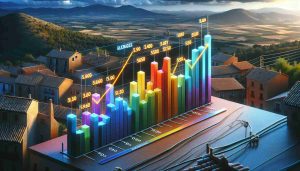China, the Asian powerhouse, has once again demonstrated its dominance in the electric mobility sector. According to a recent study by Natixis CIB, China now represents 41% of the world’s electric vehicle exports, a significant increase from 20% in 2019, the last full year before the pandemic1.
This growth is not limited to its domestic market but also extends to other regions, especially Europe. Furthermore, China has not only increased its share of exports but also solidified its position in global electric vehicle sales, accounting for 52% of the total1.
China’s success in the electric mobility sector is not solely due to local companies but also to European and American car brands that have established manufacturing operations in the country. Moreover, China produces almost two-thirds of all electric vehicle batteries, further strengthening its dominant position1.
Despite efforts by the European Union and the United States to compete with China in this sector, they have not yet managed to counter the advance of the Asian giant. The combination of a strong domestic market and aggressive expansion into other regions has allowed China to maintain and even increase its lead1.
Preguntas Frecuentes (FAQ)
¿Qué porcentaje de las exportaciones mundiales de vehículos eléctricos representa China?
China representa el 41% de las exportaciones mundiales de vehículos eléctricos.
¿Qué porcentaje de las ventas globales de vehículos eléctricos representa China?
China representa el 52% de las ventas globales de vehículos eléctricos.
¿Qué porcentaje de las baterías para vehículos eléctricos produce China?
China produce casi dos tercios de todas las baterías para vehículos eléctricos.
Glosario
Electromovilidad: Se refiere a la utilización de vehículos eléctricos, ya sean coches, autobuses, camiones o bicicletas, que utilizan electricidad como fuente de energía.
Exportaciones: Son los bienes y servicios producidos en un país y vendidos a residentes de otros países.
Vehículos eléctricos: Son vehículos que utilizan uno o más motores eléctricos para su propulsión. Pueden ser alimentados por una batería que se recarga en una estación de carga, o por una celda de combustible que utiliza hidrógeno u otro combustible para generar electricidad.










Más historias
Ford Almussafes: Transformation and Pre-retirement at 53 Years
Toyota Hilux: Innovación y Tecnología al Alcance
El Govern organiza el congreso ‘La Igualdad en Juego’ para avanzar en el impulso del deporte femenino.